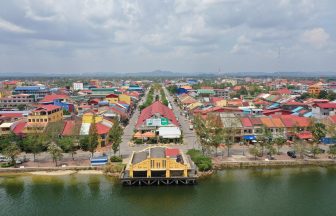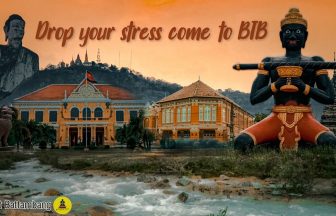
The Portuguese Empire was first established by a European power in the 15th century when Portuguese kings pursued trade routes to and from the East Indies, these colonial settlements spanned from the islands off of Portugal’s Atlantic coast to Brazil, North and West Africa, the Cape of Good Hope, Mozambique, India, Malacca, and China, and allowed for the empire to prosper through the wealth and influence each colony brought in. The Portuguese conquest of Ceuta, a Muslim commercial centre in North Africa opposite Gibraltar that took place in 1415 was one of the main conquests that helped shape the Portuguese Empire. The series of Portuguese voyages were led by explorers such as Bartolomeu Dias and Vasco de Gama and financed by Prince Henry the Navigator who managed to establish settlements around the globe.
The colonies were entrenched with the ulterior motives of trade for spices, gold, agricultural products and other resources that would benefit the Portuguese market, to spread Catholicism, and to supposedly civilise their areas of conquest. These colonies brought many opportunities and great wealth for Portugal, however, the empire decline as it did not have enough resources or people to maintain their other colonies due to the number they terrorised.
Hierarchical systems of governance:
The Portuguese Empire had an absolute monarchy government and had military garrisons, royal governors and viceroys represent the Portuguese crown in the respective colonies. Local colonial governance that was taken from Portugal included the town council (a enado da camara) and charitable brotherhood (misericórdia). The town council was established in the majority of Portugal’s colonial settlements provided them with a continuity that the colony’s temporary governors, bishops, and magistrates could not supply. It was formed of two to six aldermen, two justices of the peace, and a municipal attorney, in which all had voting rights. Members of the council who were not allowed to vote include the secretary, treasurer, market inspectors, ensigns or standard bearers, doorkeepers, a jailer, and an advocate for orphans and widows. The town council also advocates for local military garrisons for any public works such as bridges, roads, fountains, jails, policing, public health, and sanitation. The charitable brotherhood consisted of leading local citizens which they are responsible to feed, clothe, and shelter those in need, visit the ill and the dead, ransom captives, and bury the dead.
The hierarchical systems of governance in Portugal during the early modern era, up until the Carnation Revolution, also known as Portugal’s 1974 Revolution that had the social order that governed the people overthrown. The social classes are as followed: the elites, the middle class, and the lower class.
The Elites:
Before the downfall of the social order, the elites were categorised into five groups, the nobility, the landowners, the heads of large businesses, the members of learned professions, and high ranking military officers. The nobles gained their title from the monarchy in return for loyalty and their service. The large landowners or latifundiários were mainly found in the Alentejo, and other parts of Portugal such as Beira, and Ribatejo. Landowners in Lisbon tend to switch to business and industries but still kept possession of their real estates for a symbol of status and for profit-making enterprises. The business people were often those who were educated and only just moved up from the middle class. The military officers were often men from the middle class who made it through the armed forces, despite not placing so well amongst the upper elites, the importance of the armed forces still put them on the payrolls of banks, large businesses, and elite families in return for their protection.
The Middle Class:
The middle class in Portugal during the early modern era was composed of merchants, bureaucrats, and artisans. The middle-class population remained relatively small throughout and had very little political power. They are to not engage in any forms of manual labour or any activities or actions of sorts that the lower class would be found doing.
The Lower Class:
Portugal was dominated by a large number of lower classes, made up of peasants and manual labourers. Work for the lower class began at a really young age, and education was not valued as much. In places such as Alentejo, many of the lower class worked in the region’s large estates.
continuities and Changes:
Tremendous changes within the empire’s hierarchical system of governance were made upon the Carnation Revolution in 1974 to 1975, where it resulted in the majority of the social elites leaving the country, reforms were promised from the emergence of political parties, where many changes were made due to these promises by the late 1970s. It took away the power the elites had prior to the revolution. Workers joined unions, extensive land holdings were divided in the countryside, industries were nationalised, and immigrants from former Portuguese colonies allowed for increased diversity within the country. The revolution took the biggest toll in the lower class in Alejento as the large estates were nationalised, taken for reform, and taken over by their workers.
The Moors were Muslims from North Africa who conquered most of the Iberian Peninsula in 711, however much of the territory ended up being occupied by Portugal and Spain during the early modern era. Moorish influence led to the introduction of the Portuguese language, Portuguese architecture, customs, and textiles, in which the Portuguese language still remains today.
Trade:
The trade that occurred during the early modern era in Portugal not only helped increase their economy but also their power. By the 16th century, they had a monopoly over the Eastern spice trade as a result of the switch in focus, where they began focusing on commerce as of 1508. The empire put in intensive effort in trade and colonisation, they were above all in using ships to improve trade efficiency and profitability. Merchants were given the opportunity to claim whatever land on behalf of the Portuguese government, which this created more emphasis on travel as it allowed them to gain more territory for the benefit of their own. Colonies in West Africa in Guinea and Angola were established due to the slave trade as a part of the triangular trade which traded slaves for goods. Gold was also traded in colonised areas such as areas near the Zambezi river. They also harvested pau-brasil redwood for its dye from Brazil, which is also one of its colonies. These successful trades led the empire to immense wealth. However, as the number of colonies expanded, the government reached its carrying capacity and was not able to control all the colonies, leading to the colonies breaking off into their own countries and migration also occurred amongst the various colonies/countries. Trade allowed for cultural and technological diffusion because of the interaction between the peple of different cultures, where it led to the indigenous people in the colonies converting to the desired religion and adapting to the cultural practices of the coloniser.
Culture:
The Portuguese empire had a rich cultural heritage, with inspiration that rooted from the literary and artistic changes in the 15th and 16th centuries that were derived from the encouraged maritime explorations from the Portuguese explorers. The Portuguese empire and the Spanish empire had many historical influences in common such as the Romans, Visigoths, and the Islamic rule which can be seen in their architectures.
 Login as
Login as



































;>/img/banner/partner $url=>$index; .png)